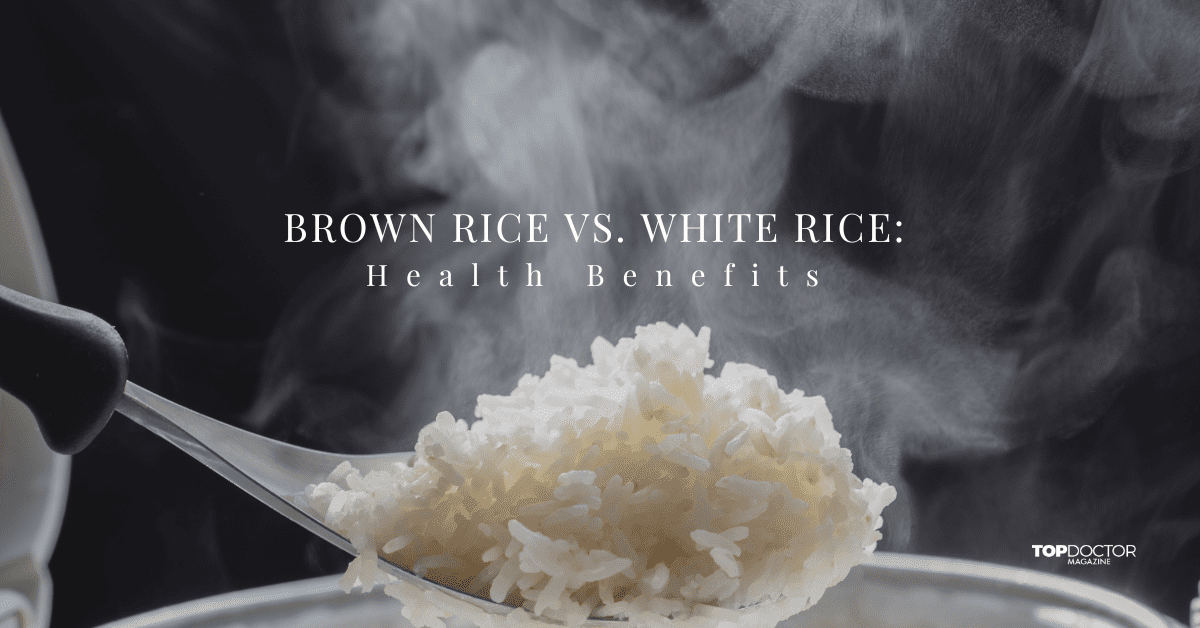Many people have been trying to answer the question: which is healthier: brown rice or white rice? And while it’s true that both bring many health benefits to the table, besides the delicious taste you can infuse your meals with. However, before picking a winner, you have to consider the benefits white rice and brown rice can bring to your health. Some are similar, but some differ. That is why we have to take a deeper look into the world of rice.
Brown Rice vs. White Rice
Before talking about different types of rice, in particular, we have to know where the popularity of rice stems from.
Rice is considered one of the most important foods on the planet, as it contains an impressive amount of calories. More precisely, almost 20% of the world’s calorie intake relies on rice. Almost half of the world’s population has rice integrated into their diets, as rice partakes in the culinary habits of so many cultures!
But the brown rice versus white rice dichotomy is nothing more than a grain of sand in the 100,000 varieties of rice produced worldwide! White rice is by far the popular choice between the two, but that does not mean it is the healthier choice.
Does Brown Rice and White Rice Taste the Same?
What makes these two types of rice taste the way they do is how they are processed to become edible. Almost every part of the grain, such as the bran and germ, is removed, which results in white rice. Brown rice, on the other hand, keeps the bran and germ, components that keep the ingredient and as a ‘whole grain.’ Because of this different processing method, brown rice has a chewier texture and nuttier taste, while white rice seems softer and has a less strong taste.
How is Brown Rice Better Than White Rice?
Brown rice may not be present in many people’s diets compared to its white counterpart, but that does not mean it doesn’t have many health benefits. People like to argue between the two types of rice, but there is a clear winner regarding benefits from a health perspective, and that winner is brown rice!
Rich in Nutrients
The nutrient content of brown rice is not significantly different compared to white rice. Both brown and white rice contain fiber, antioxidants, minerals and many vitamins, although white rice is slightly richer in iron.
Positive Results over Blood Sugar Levels
Some researchers suggest that eating brown rice may help lower your blood sugar levels. As your blood sugar levels decrease, so are the chances of developing type 2 diabetes. By switching the whole grains and white rice in your diet with brown rice, you can experience these benefits in no time!
The only downside of eating white rice is that, in large quantities, it can increase the risk of diabetes. That is why you have to moderate your white rice intake, as it increases blood sugar levels much faster than brown rice. You can prevent this from happening by cooling your white rice before eating it.
May Reduce the Risk of Heart Disease
It has been suggested in some studies that brown rice can help reduce the risk of developing heart diseases. People who eat whole grains, such as brown rice, reduced their risk of heart disease by 21%. In addition, brown rice can lower the bad cholesterol in your body.
Aids in Weight Control
Both types of rice are known to aid weight control. Many studies show that integrating whole grains into your diet will lower your body weight. However, brown rice is a more effective weight control option because it contains more nutrients than white rice. As brown rice positively affects your sugar blood levels, it also aids weight loss.
White Rice Does Not Contain Antinutrients
Compared to brown rice, white rice does not contain antinutrients. Antinutrients are compounds found in food that may reduce the body’s ability to absorb different nutrients.
Unfortunately, brown rice contains an antinutrient called phytic acid that can impair and make it difficult for your body to digest. Although it offers various health benefits, phytic acid reduces the body’s ability to absorb iron and zinc.
Arsenic Levels
Brown rice tends to contain slightly higher levels of arsenic compared to white rice. Eating arsenic for long periods can increase the risk of chronic diseases such as cancer, heart disease and type 2 diabetes. But this is not something to be afraid of if you eat rice in moderation or with other foods!
How to Cook Brown Rice
There are many ways to cook brown rice, although the cooking pattern is always similar.
The first thing you have to do is rinse the rice in order to remove any excess starches, which, if not eliminated, can turn the rice gummy as it cooks. Then, measure the water you have to use for the cooking — two cups of water for every cup of rice is a great ratio. Also, add some extra-virgin olive oil to the pot as you stir the rice.
When you notice the water boiling, reduce the heat and cover the pot for about 45 minutes. During this time, the rice will absorb the water, giving the grain a tender and fluffy texture. After you let the rice absorb the water, turn off the heat and let it sit for another 10 minutes. Remove the lid afterward and slowly stir the rice with a fork.
A Parting Reminder
The answer to the question, is brown rice or white rice better for you, has only one clear answer — brown rice takes the cake! Consider including brown rice in your diet for better health and improved food taste!






0 Comments